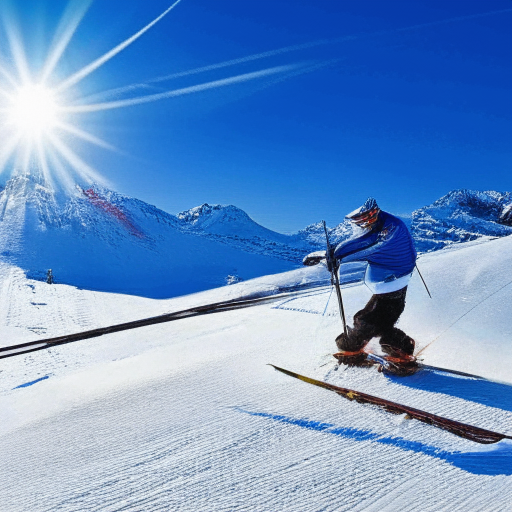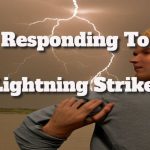Protect Your Vision: Comprehensive Tips to Prevent Snow Blindness
As winter transforms the landscape into a breathtaking wonderland of sparkling white snow, it’s vital to understand and address the potential eye hazards that come with enjoying outdoor activities in this beautiful yet risky environment. One of the primary threats is snow blindness, a painful and temporary eye condition caused by overexposure to ultraviolet (UV) rays that reflect off snow surfaces. This detailed guide explores the intricacies of snow blindness, illuminating the scientific principles behind it, the effects of sunlight reflecting off snowy terrains, and offering practical prevention strategies, accurate diagnosis methods, and effective treatment options. By gaining insight into the causes of this condition and implementing protective measures, you can relish the stunning beauty of winter while safeguarding your invaluable eye health.

Comprehensive Overview of Snow Blindness: Medical Terms and Underlying Causes
Medically referred to as photokeratitis, snow blindness is a temporary corneal injury that occurs when the eye’s outer protective layer is damaged due to excessive exposure to high levels of ultraviolet (UV) radiation. This uncomfortable condition primarily arises from prolonged exposure to UV rays, especially those reflected off snow-covered surfaces. On bright, sunny days, particularly in elevated areas where the atmosphere is thinner, sunlight can be intensely powerful, leading to significant discomfort and, in rare cases, lasting vision issues. Although snow blindness typically resolves within a short timeframe, understanding its causes is crucial for implementing effective prevention and management strategies. Awareness of these risks empowers individuals to take proactive steps to protect their eyesight and maintain their visual health.
Understanding the Interaction Between Sunlight and Snow: How It Affects Your Eyes
To fully comprehend the dynamics of snow blindness, it’s essential to analyze how sunlight interacts with snow-covered landscapes. Sunlight, which travels through the earth’s atmosphere, consists of various wavelengths, including harmful ultraviolet radiation. When these UV rays hit a snow-blanketed surface, the snow’s unique reflective properties can bounce back as much as 80% of these rays, drastically increasing exposure levels. This reflection is amplified in mountainous regions, where the atmosphere’s filtering ability for UV radiation is significantly reduced. As a result, the eyes can quickly become overwhelmed by this excessive UV exposure, potentially leading to damage to vital eye structures such as the cornea and conjunctiva. This highlights the critical importance of taking protective measures when engaging in activities in snowy environments to preserve eye health.
Identifying Symptoms of Snow Blindness: Know When to Act
The symptoms of snow blindness typically manifest several hours after a person has been exposed to intense UV light for an extended period. While the severity of symptoms can vary among individuals, common signs include:
Eye discomfort and pain: Many individuals report experiencing a gritty sensation or the feeling of foreign objects lodged in their eyes.
Redness and swelling: Affected eyes may appear bloodshot, and eyelids can swell, exhibiting signs of inflammation.
Watery eyes: Increased tearing occurs as the eyes attempt to flush out irritants, providing some relief from discomfort.
Blurry vision: Activities requiring clear sight, such as reading or driving, may become increasingly challenging due to distortion and blurriness.
Sensitivity to light: Heightened light sensitivity, known as photophobia, often accompanies headaches and discomfort.
Sensation of halos: Some individuals may observe bright rings or halos around light sources, contributing to visual confusion and discomfort.
Proven Strategies to Prevent Snow Blindness and Protect Your Eyes
Protecting your eyes from the harmful effects of UV radiation is far more effective than seeking treatment after the onset of symptoms. Here are several actionable recommendations to help minimize the risk of snow blindness:
Wear appropriate eyewear: Always choose goggles or sunglasses that provide 100% UV protection when venturing into snowy environments. Look for eyewear labeled with UV400 or 100% UV protection to ensure maximum safety.
Select wraparound styles: Opt for sunglasses or goggles that wrap around the sides of your face, providing comprehensive protection against direct sunlight and side UV exposure.
Utilize wide-brimmed hats: Hats featuring wide brims or neck flaps can offer additional shade, significantly reducing UV radiation exposure to your eyes.
Check the UV Index: Before heading outdoors, consult the local UV Index, which predicts daily UV exposure levels. Be vigilant about limiting sun exposure during peak hours, typically between 10 AM and 4 PM.
Apply sunscreen: While it may seem unrelated, applying sunscreen around your face and eyes can help lower UV radiation exposure, thereby enhancing your overall protection.
Take breaks indoors: If you plan to spend extended periods in snowy areas, make it a habit to take regular breaks indoors. This practice allows your eyes to rest and recover from the bright light exposure, promoting better eye health.
Recommended Relief Techniques for Recovery from Snow Blindness
If you find yourself suffering from the symptoms of snow blindness despite taking preventive measures, several strategies can help alleviate discomfort and facilitate recovery:
Seek shade: Immediately retreat to a darkened area or indoors to shield your eyes from further UV exposure, which can exacerbate discomfort.
Remove contact lenses: If you wear contact lenses, promptly take them out to prevent additional irritation and allow your eyes to recover effectively.
Apply cold compresses: Gently placing a cold, damp towel over closed eyes can provide soothing relief and significantly reduce swelling.
Use artificial tears: Over-the-counter artificial tears can offer temporary relief, keeping your eyes lubricated and alleviating dryness caused by snow blindness.
Avoid bright lights: Limit exposure to intense light sources, including screens and overhead lights, to lessen the impact of photophobia during recovery.
Rest your eyes: Engage in minimal visual strain activities, avoiding reading or screen time to give your eyes the essential time they need to heal properly.
When to Consult a Healthcare Professional About Snow Blindness
In most cases, symptoms of snow blindness will begin to subside within 24 to 48 hours as the cornea starts to heal. However, it is crucial to seek medical attention if symptoms worsen or persist, as delays in treatment can lead to complications or secondary infections. Prompt intervention can prevent further damage and ensure a healthier recovery process.
Experiencing snow blindness can significantly hinder the enjoyment of winter activities; however, with the right knowledge and precautionary measures, the risk can be greatly minimized. Stay informed about UV radiation levels, take regular breaks in shaded areas, and always wear protective eyewear to enjoy your outdoor adventures safely. If you notice any symptoms of snow blindness, seek relief promptly and consult a healthcare professional if necessary. By prioritizing eye safety, you can immerse yourself in the winter wonderland and create cherished memories without jeopardizing your vision. Embrace your winter adventures with caution!
The post Snow Blindness: Understanding Its Causes and Effects appeared first on Survival Bite.
The Article Snow Blindness Causes and Effects Explained Was Found On https://limitsofstrategy.com






Your exploration of snow blindness really sheds light on an often-overlooked aspect of enjoying winter sports and activities. I’ve always loved the snowy season, everything from skiing to simply taking long walks through glittering landscapes. However, I never really considered how serious the risks of UV exposure can be, especially with all that reflective light bouncing off the snow. Your emphasis on prevention strategies particularly resonates with me. A few years ago, I experienced a mild case of snow blindness while out on a ski trip—what a wake-up call that was! I remember the burning sensation and how sensitive my eyes became for days afterward; it was certainly a reminder to pay attention to eye protection.
It’s great to hear about your love for the snowy season and the joy it brings. Your experience with snow blindness really drives home how important it is to protect our eyes while enjoying those breathtaking winter landscapes.
It’s interesting how your experience with snow blindness has made you more aware of eye protection in snowy conditions. That burning sensation can be pretty alarming; it’s surprising how our eyes can react so strongly to UV exposure, especially when we’re usually cautious about our skin.
It’s so true how our eyes can react so dramatically to UV exposure. I think many people don’t realize that snow can actually amplify sunlight, making those rays even more intense. The burning sensation I experienced was a real wake-up call about the importance of eye protection in winter settings.
This post brings up such an important aspect of winter enjoyment that many might overlook—the impact of UV exposure on our eyes. Living in a snowy region, I’ve learned the hard way just how painful snow blindness can be. It’s fascinating to consider how our eyes, unprotected, can suffer from such a seemingly simple oversight.